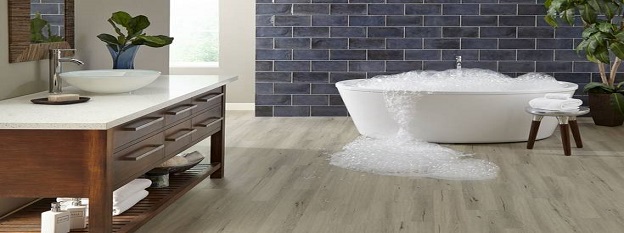- 23 Nov, 2020
Yes, wood floor can be water-resistant but not waterproof.
When floors are water-resistant, this means there is an additional barrier that prevents moisture from penetrating the core for a certain period of time. Water-resistance means that short contact with small amount of water will not cause damage. The longer the water stays on the hardwood floor, the more damage it cause.
Before installing this type of parquet, you need to examine few wood flooring types to select the right one.
TYPES OF WOOD FLOORING
Solid hardwood flooring made of planks milled from a single piece of timber. Therefore, this type of wood expands and contracts more than engineered, for example. As a result of such qualities, this flooring is not suitable for environments in basements, bathrooms or any other areas which are extensively exposed to moisture. If floors were flooded, there is a chance to save them, but they will never look as new.
Engineered wood works better than solid wood flooring. This type of flooring has the base made of a more durable and water-resistant plywood material.
Bamboo flooring is an organic material. It made from a large ratio of synthetic resins and adhesives that are water-resistant but not waterproof. Bamboo flooring is relatively good at handling moisture when compared to “inorganic” plastic laminate flooring.
Nevertheless, the main role belongs to the water-resistant finishing.
3 WAYS TO WATER-RESISTANT THE WOOD FLOORS
- Use a linseed or Tung oil to create a protective finish;
- Use Polyurethane, varnish, or lacquer coating to seal the wood
- Finish and waterproof wood together with a stain-sealant combo.
Even all these methods will protect your floors, you still should avoid flooding and regular moisture.

